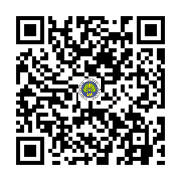DESAIN LEMBAR KERJA PESERTA DIDIK (LKPD) TERINTEGRASI PROBLEM BASED LEARNING (PBL) UNTUK MEMFASILITASI KEMAMPUAN BERPIKIR KREATIF SISWA
Keywords:
LKPD, Problem-based learning, Berpikir kreatifAbstract
Education in the 21st century demands various skills that a person must master, facing these challenges, one of the skills that can be trained students is the ability and skills of creative thinking (Creativity), following the 21st-century skills needed by students, namely the 4C skills. This study aims to design a Student Worksheet (LKPD) integrated with the Problem-Based Learning (PBL) model to facilitate students' creative thinking skills in physics learning, especially in alternative energy materials. The research method used is development research with the ADDIE model. The subjects of this research product trial are students from class X and physics teachers of SMAN 1 Padang Ganting. Meanwhile, the object of the research is the integrated LKPD PBL to facilitate creative thinking skills. The validity criteria for LKPD were obtained as a result of 91% (very valid). The practicality criteria of LKPD by teachers were obtained 96.8% (very practical) and the level of practicality by students was 89.2% (very practical). Thus, this PBL-integrated LKPD is expected to be an effective and interesting learning resource and help students understand physics concepts.
References
Arends, & Richard. (2012). Learning to Teach Tenth Edition. New York: McGrawHill Education.
Branch, R. M. (2009). Instructional Design: The ADDIE Approach. New York: Springer.
Cahyadi, R. A. (2019). Pengembangan Bahan Ajar Berbasis ADDIE Model. Halaqa: Islamic Education Journal, 35-43.
Center, P. P. (2010). 21st Century Skills for Students and Teachers. Honolulu: Kamehameha Schools.
Depdiknas, Panduan Pengembangan Bahan Ajar. 2008.
Filsaime, D. K. (2008). Menguak rahaasia berpikir kritis dan kreatif. Jakarta: Prestasi Pustaka Raya.
Gusyanti, C. (2021). Analisis Lembar Kerja Peserta Didik (LKPD) Berbasis Problem Based Learning Terhadap Hasil Belajar Siswa. Cybernetics: Journal Educational Research and Social Studies, 2(4). http://pusdikra-publishing.com/index.php/jrss
Jayadi, A. (2020). Identifikasi Pembekalan Keterampilan Abad 21 pada Aspek Keterampilan Pemecahan Masalah Siswa SMA Kota Bengkulu dalam Mata Pelajaran Fisika. Jurnal Kumparan Fisika, 25-32.
Lesmono, A. D. (2021). Pengembangan Bahan Ajar Fisika Berupa Komik Pada Materi Cahaya. Jurnal Pembelajaran Fisika, 1.
Nieveen, N. (1999). Prototyping to Reach Product Quality. Dalam Jan van den Akker, Robert M. Branch, Kent Gustafson, Nienke Nieveen, & Tjeerd Plomp (Eds.), Design Approaches and Tools in Education and Training (hlm. 125–135). Dordrecht: Springer. https://doi.org/10.1007/978-94-011-4255-7_10
Plomp, T. (2013). Educational Design Research: An Introduction. In T. Plomp & N. Nieveen (Eds.),
Setiawan, A. (2021). Problem Based Learning (PBL) Model for the 21st Century Generation. SHEs: Conference Series 4 (6) , 290-296.
Shaughnessy, M. F. (1998). An Interview with E. Paul Torrance: About Creativity. Eastern New Mexico University.
Sugiyanto. (2010). Model-model pembelajaran inovatif. Surakarta: Yuma Pustaka.
Sugiyono. (2019). Metode Penelitian Kuantitaf, Kualitatif, dan R&D. Bandung: Alfabeta.
Trianto. (2010). Model pembelajaran terpadu: Konsep, strategi, dan implementasinya dalam kurikulum tingkat satuan pendidikan (KTSP). Jakarta: Bumi Aksara.
Winarti, W. T. (2020). Pembelajaran Fisika Menggunakan Discovery Learning Berbasis Edutainment. Jurnal Ilmiah Pendidikan FIsika, 47-54.
Downloads
Published
How to Cite
Issue
Section
License

This work is licensed under a Creative Commons Attribution-ShareAlike 4.0 International License.









1.png)
4.png)





